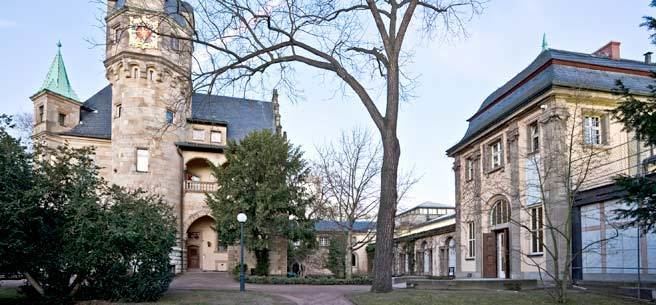Country Germany Population 243,173 (2012) University Chemnitz University of Technology Area 220.85 km2 | State District Urban districts of Germany Mayor Barbara Ludwig (SPD) | |
Points of interest Gunzenhauser Museum, Saxon Railway Museum, Sachsenring, Sportforum Chemnitz | ||
Chemnitz ( known from 1953 to 1990 as Karl-Marx-Stadt) is the third-largest city in the Free State of Saxony, Germany. Chemnitz is an independent city which is not part of any county and seat of the Freistaat Sachsen. Located in the northern foothills of the Ore Mountains, it is part of the Central German Metropolitan Region. The citys economy is based on the service sector and manufacturing industry. Chemnitz University of Technology has around 10,000 students.
Contents
- Map of Chemnitz
- A trip to chemnitz germany euromaxx
- Ww2 mass surrender at chemnitz liberated pows and dps bomb damage 1945
- History
- Sights
- Economy
- Good food in thailand
- References
Map of Chemnitz
A trip to chemnitz germany euromaxx
Ww2 mass surrender at chemnitz liberated pows and dps bomb damage 1945
History

An early Slavic tribes settlement was located at Kamienica, and the first documented use of Chemnitz was the 1143 site of a Benedictine monastery around which a settlement grew. Circa 1170 Frederick I, Holy Roman Emperor granted it the rights of an imperial city. In 1307, the town became subordinate to the margraviate of Meissen (the predecessor of the Saxon state). In Medieval Times Chemnitz became a centre of textile production and trade. More than one third of the population worked in textile production.

By the early 19th century Chemnitz had become an industrial centre (sometimes called "the Saxon Manchester"). In 1913, Chemnitz had a population of 320,000 and, like Leipzig and Dresden, was larger at that time than today. After losing inhabitants due to the first World War Chemnitz grew rapidly again and reached its all-time peak of 360,250 inhabitants in 1930. Before the world economic crises, it was supposed that the city would keep on growing and would become a "Millionenstadt" (engl. Megacity, literally: city with at least one million inhabitants) by incorporating also fast growing smaller towns and municipalities around it.
During World War II, Chemnitz contained factories that produced military hardware and a Flossenburg forced labor subcamp (500 female inmates) for Astra-Werke AG. The oil refinery was a target for bombers during the Oil Campaign of World War II, and Operation Thunderclap attacks included the following raids:
The headquarters of the auto manufacturer Auto Union were also based in Chemnitz since 1932 and its buildings were also badly damaged. At the end of the war, the companys executives fled and relocated the company in Ingolstadt, Bavaria, where it evolved into Audi, now a brand within the Volkswagen group.
The World War II bombings left most of the city in ruins, and post-war, the East German reconstruction included large low rise (and later high-rise plattenbau) housing. Some tourist sites were reconstructed during the East German era and after German reunification. It was occupied by Soviet troops on 8 May 1945.
From 10 May 1953 to 21 June 1990, Chemnitz was named Karl-Marx-Stadt (literally Karl Marx City, though the German term was also used in English).
Sights
Tourist sights include the Kassberg neighborhood with 18th and 19th century buildings and the Karl Marx Monument by Lev Kerbel, nicknamed "Nischel" (a Saxon dialect word for head) by the locals. Landmarks include the Old Town Hall with its Renaissance portal (15th century), the castle on the site of the former monastery, and the area around the opera house and the old university. The most conspicuous landmark is the red tower built in the late 12th or early 13th century as part of the city wall.
The Chemnitz petrified forest is located in the courtyard of Kulturkaufhaus Tietz. It is one of the very few in existence, and dates back several million years. Also within the city limits, in the district of Rabenstein, is the smallest castle in Saxony, Rabenstein Castle.
The city has changed considerably since German reunification. Most of its industry is now gone and the core of the city has been rebuilt with many small shops as well as huge shopping centres. Many of these shops have well known names, including Zara, H & M, Esprit, Galeria Kaufhof, Leiser Shoes, and Peek & Cloppenburg. The large "Galerie Roter Turm" (Red Tower) shopping centre is very popular with young people.
The Chemnitz Industrial Museum is an Anchor Point of ERIH, the European Route of Industrial Heritage.
The Museum Gunzenhauser, formerly a bank, opened on 1 December 2007. Dr Alfred Gunzenhauser, who lived in Munich, had a collection of some 2,500 pieces of modern art, including many paintings and drawings by Otto Dix, Karl Schmidt-Rottluff and others. The Botanischer Garten Chemnitz is a municipal botanical garden, and the Arktisch-Alpiner Garten der Walter-Meusel-Stiftung is a non-profit garden specializing in arctic and alpine plants.
Economy
Chemnitz is the largest city of the Chemnitz-Zwickau urban area and is one of the most important economic areas of Germanys new federal states. Chemnitz had a GDP of about €6.3 billion in 2004. Since about 2000, the citys economy has recorded high annual GDP growth rates; Chemnitz is among the top ten German cities in terms of growth rate. The local and regional economic structure is characterized by medium-sized companies, with the heavy industrial sectors of mechanical engineering, metal processing, and vehicle manufacturing as the most significant industries.
